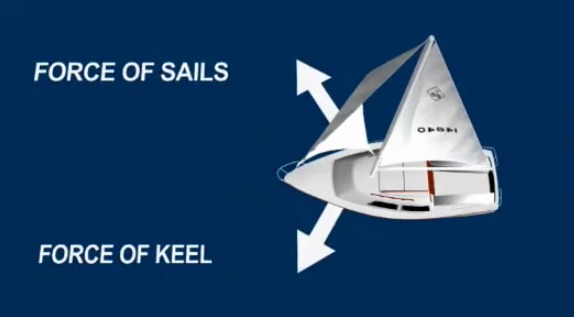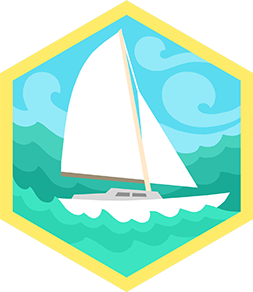Go sailing
Build and sail a simple model boat, then try a supervised beginner sail on calm water, learning wind, steering, and safety.



Step-by-step guide to build and sail a model boat and take a supervised beginner sail
KIDS AHOY! Sailing with Kids // Liveaboard Families Part I (Ep 83)
Step 1
Gather all the materials from the list and put them on a clean work surface.
Step 2
Ask an adult to make a hull by cutting a small plastic bottle or shaping the foam into a boat shape.
Step 3
Cut a triangle sail from the paper or light plastic using scissors.
Step 4
Push the straw or wooden skewer into the hull to make a mast.
Step 5
Secure the mast to the hull with waterproof tape so it stands upright.
Step 6
Tape the sail to the mast so it catches the wind when raised.
Step 7
Press modeling clay under the middle of the hull to add ballast and help the boat stay upright.
Step 8
Place the boat gently in a sink or tub of water to see if it floats.
Step 9
Add or remove small bits of clay until the boat floats level and does not tip over.
Step 10
Decorate your boat with colouring materials to make it look amazing.
Step 11
Put on your life jacket before you go near a real pond or pool.
Step 12
Have your adult check that the weather is calm and the water is safe for a supervised beginner sail.
Step 13
Sit in the small sailboat while your adult keeps the boat steady at the edge of the water.
Step 14
Hold the tiller or paddle and try steering a short supervised distance while your adult helps you learn how the wind moves the sail.
Step 15
Share your finished creation and what you learned on DIY.org
Final steps
You're almost there! Complete all the steps, bring your creation to life, post it, and conquer the challenge!


Help!?
What can I use if I don't have a small plastic bottle or craft foam for the hull?
Use a sturdy yogurt tub, a recycled takeout container trimmed into a boat shape, or glue a few wine corks together and follow the instruction 'Ask an adult to make a hull by cutting a small plastic bottle or shaping the foam into a boat shape.'
My boat keeps tipping or the mast falls over—what should I try?
Secure the straw or wooden skewer mast with extra waterproof tape, press more modeling clay under and around the mast inside the hull as described in 'Secure the mast' and 'Press modeling clay under the middle of the hull,' and then 'Add or remove small bits of clay' to rebalance the boat.
How can I change the activity for different ages?
For toddlers, have an adult pre-cut the triangle sail and assemble the hull and mast while older kids can shape the foam hull themselves, experiment with different sail sizes, and practice steering a short supervised distance as in 'Sit in the small sailboat while your adult keeps the boat steady.'
How can we make the boat better or more fun after the basic build?
Attach a cardboard or popsicle-stick rudder with waterproof tape to the stern, decorate the hull with colouring materials, and test different sail shapes in the sink while adjusting ballast using the 'Add or remove small bits of clay' step before trying it on real water.
Watch videos on how to build and sail a model boat and take a supervised beginner sail
LEARN TO SAIL PART 1
Facts about sailing and water safety for kids
⚖️ Model boats float because of buoyancy: they push away water equal to their own weight, which keeps them on the surface.
⛵ People have been using sail-powered boats for thousands of years — some ancient sailboats are over 5,000 years old!
🌬️ A sail acts like an airplane wing: wind flowing over it creates lift that helps push the boat forward.
🧭 Tiny tweaks to the rudder or the sail (called steering and trimming) can make a big difference in which way a boat goes.
🧯 Wearing a life jacket is the single best safety step on the water — it keeps you afloat if you fall in.
How do I build a simple model boat and then safely introduce my child to a supervised beginner sail?
What materials do I need to build the model boat and for a supervised beginner sail?
What ages are building a model boat and trying a supervised beginner sail suitable for?
What safety tips and benefits should I know before going sailing with my child?


One subscription, many ways to play and learn.
Only $6.99 after trial. No credit card required



